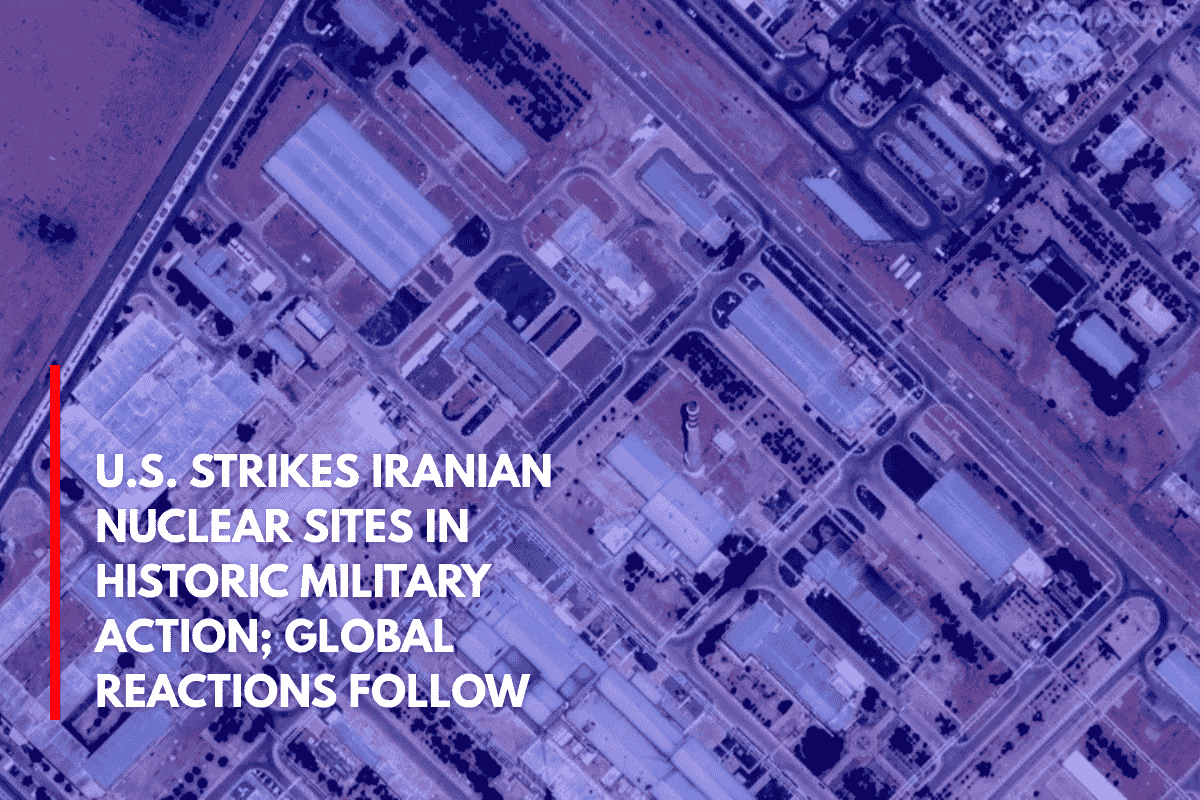On June 21, 2025, President Donald Trump declared a “spectacular military success” after the U.S. military launched airstrikes on three Iranian nuclear sites.
The targets included key uranium enrichment facilities in Fordow, Natanz, and Esfahan. Trump claimed that the attack had successfully “obliterated” Iran’s nuclear capacity and warned that further strikes would follow if Iran did not meet U.S. demands.
“Iran’s key nuclear enrichment facilities have been completely and totally obliterated,” Trump said, calling Iran’s nuclear program a “horribly destructive enterprise.” He also stressed that the U.S. would act with “precision, speed, and skill” if Iran failed to negotiate peace.
Military Operation Details
The B-2 stealth bombers from Whiteman Air Force Base in Missouri launched the strikes, dropping GBU-57 bunker-buster bombs. These weapons are capable of penetrating deeply buried structures, a unique feature that makes them effective against Iran’s fortified nuclear sites. The Pentagon confirmed that Tomahawk cruise missiles were also used in the attack, fired from submarines.
While Trump has called the operation a success, battle damage assessments have not yet concluded the full extent of the strikes.
Global Reactions and Concerns
The attack on Iran has drawn mixed reactions worldwide. Israeli Prime Minister Benjamin Netanyahu praised the U.S. action, calling it an effort to prevent Iran from acquiring nuclear weapons. He described the U.S. intervention as a decisive moment for peace and prosperity in the Middle East.
However, Iran’s Supreme Leader Ayatollah Ali Khamenei responded by warning of “irreparable damage” if the U.S. continues its involvement in the conflict, signaling potential retaliatory actions. Iran’s threats include military counterattacks on U.S. bases in the Middle East and other key regional targets.
The U.S. military presence in the region is significant, with roughly 40,000 troops stationed in countries such as Iraq, Syria, and Gulf states. Former officials have suggested Iran could retaliate by targeting U.S. assets or regional oil facilities.
Congressional Reactions and Legal Concerns
In the U.S., the military strikes have sparked controversy. Rep. Alexandria Ocasio-Cortez (D-NY) called the attack “grounds for impeachment” due to its lack of congressional authorization. She criticized Trump for bypassing Congress, stating that “war powers” lie with the legislative branch.
On the other hand, some Republican lawmakers, including Sen. John Fetterman of Pennsylvania, supported Trump’s decision, claiming it was a necessary action to stop Iran from acquiring nuclear weapons. Rep. Thomas Massie (R-KY), however, expressed concerns over the constitutional legality of the action.
Increased Security Measures and Tensions
In the aftermath of the strikes, U.S. officials have increased security alerts at military bases in the Middle East, fearing potential Iranian retaliation. Andrew Borene, a former counterterrorism official, warned that the U.S. could face further attacks through proxy terrorism and cyber operations by Iranian-backed groups.
Terror Alert Levels Increased
Terror alert levels have been raised, even in major U.S. cities, due to concerns over potential Iranian sleeper cells activating in response to the airstrikes. Experts warn that asymmetric attacks could escalate tensions further, particularly if Iran resorts to proxy warfare or cyberattacks.
Timeline of Conflict
The recent airstrikes were the culmination of days of escalating hostilities between Israel and Iran, starting when Israel bombed key Iranian nuclear and military sites. These attacks were met with missile launches by Iran targeting Israeli civilian sites.
Following these developments, Trump began considering U.S. involvement in the conflict, particularly after receiving pressure from Israeli officials, including Prime Minister Netanyahu.
Trump’s earlier withdrawal from the Iran nuclear deal in 2018 was based on his belief that it did not do enough to prevent Iran from pursuing nuclear weapons.
President Trump’s Address
Later in the evening, Trump addressed the nation from the White House, calling the airstrikes a “historic moment” for the U.S., Israel, and the world. He emphasized that further military action would follow if Iran did not agree to peace terms.
“Peace or tragedy,” Trump said, outlining the potential for even greater attacks if peace talks do not begin soon.
Fordow and Other Targeted Sites
Fordow, one of the targeted Iranian nuclear sites, is located underground, approximately 80-90 meters beneath a mountain near the city of Qom. The site is significant for its uranium enrichment capabilities. Natanz and Esfahan, also attacked, are similarly vital to Iran’s nuclear program.
Experts have noted that Fordow, in particular, is one of the most well-protected nuclear facilities, requiring powerful bombs like the GBU-57 to cause significant damage.











Leave a Reply